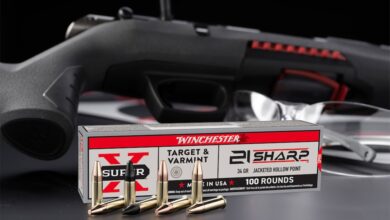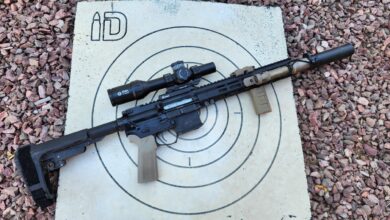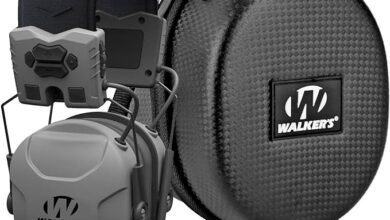The Vortex Defender Series: ST vs CCW Comparison

Vortex was an early producer of handgun red dots. Optics like the Vortex Venom and Viper were early contenders for affordable and commonly available optics. Those optics are now quite dated and have fallen out of favor with most shooters. Vortex wants that sweet micro red dot money and has introduced the new Defender series. The Defender series started with the Defender-CCW and has expanded into the Defender-ST.
I’ve got my hands on both and have decided to take them to the mats. Is one better than the other? Is there a big difference between two red dots made by the same company that are part of the same series? If there wasn’t, I wouldn’t write the article. I was pleasantly surprised by the differences between the two topics.
I originally reviewed the Defender-CCW shortly after it came out, and I wasn’t impressed. It was fine, but it had some serious weaknesses. When the ST came out, I expected more of the same but bigger. Before we dive into where the optics differ, let’s talk about what they have in common.
The ST and CCW – Brothers From Different Mothers
Both the ST and CCW are micro red dots designed for handguns. Both offer either a 3- or 6-MOA dot and use an exposed emitter design. Vortex went hard with this textured front design that encourages you (or at least me) to slam the front of the optic against tables to charge my pistol.

While the batteries differ, both optics see a top-loading battery. Vortex includes a metric ton of different screws with each optic and Glock MOS plates. This makes it easy to attach the optic to various handguns that use various screw lengths. Both optics even come with Picatinny rails. That’s what they have in common. So, where do they differ?
The Size Difference
As the name implies, the CCW is for CCW guns. It’s the smaller of the optics and uses a Shield RMSc footprint. The ST, or standard, is for larger guns and is a bigger option. The ST uses the Leupold DPP footprint and makes good use of this rather larger optic footprint. The bigger size allows for a bigger battery, and the ST uses the 2032 compared to the CCW’s 1632.
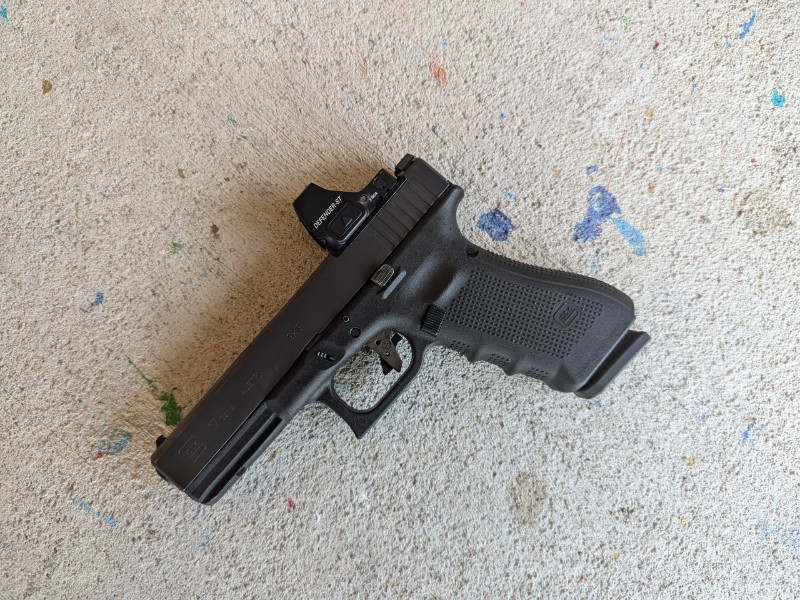
The CCW is 1.59 inches long and weighs less than an ounce. The ST measures 1.83 inches and weighs 1.48 ounces. The bigger ST comes with a bigger window. The ST window is 23 mm wide and 20 mm high, while the CCW window measures 20 mm wide and 16 mm high. This distinct difference separates the optics into entirely different categories.
Clarity
Vortex uses high-dispersion, high-clarity glass that delivers an impressive level of clarity. The view through both optics is quite nice. The notch filter, that blue tint you see in most red dots, is light. It’s not super dark or even all that noticeable unless you go looking for it.
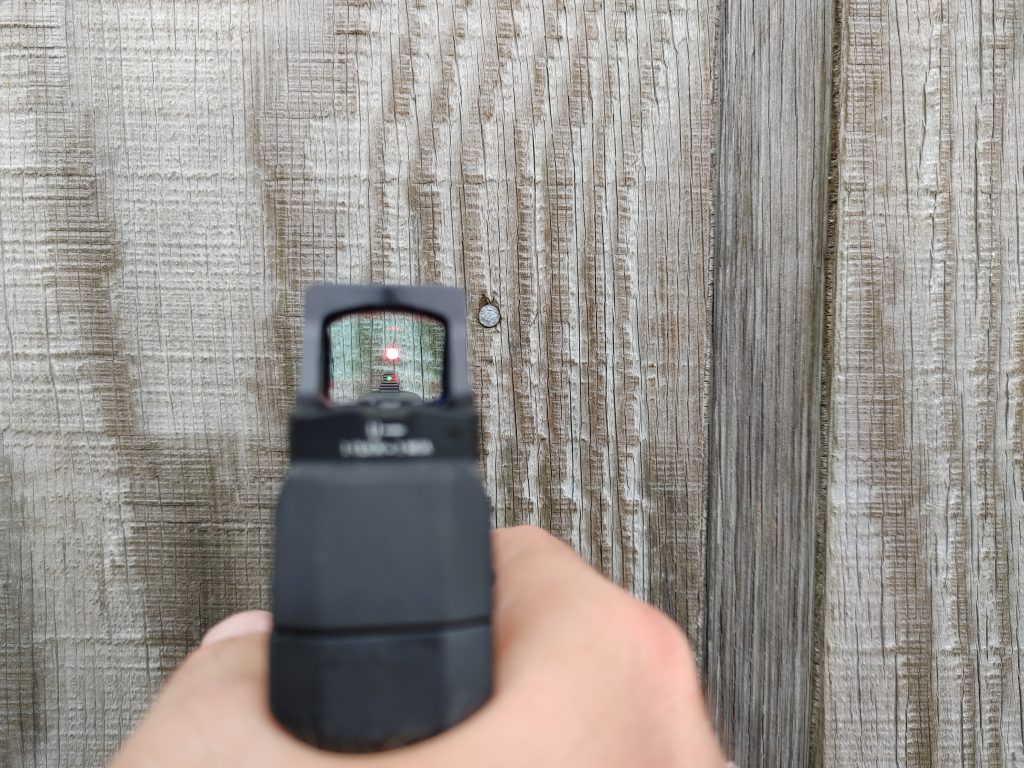
In a vacuum, the dots don’t look all that different. You likely won’t notice a difference if you’re just looking through these two optics in a gunshop. However, the ST has a better higher refresh rate than the CCW. It’s very evident at lower brightness levels.
It’s even more evident when you start shooting. The CCW’s dot has distinct lag and spots instead of streaks. The ST is a noticeable improvement on the CCW.
The Battery
As noted, the ST uses the larger 2032 battery, which grants the optic up to 25,000 hours of use on a moderate setting. The ST also features a shake-awake auto-off function that shuts the optic off after it fails to sense movement for 10 minutes. The CCW uses a smaller 1632 battery and has a battery life of only 9,500 hours. It also has a shake-awake style auto-off system, but the optic doesn’t shut off for 14 hours.
The ST is a well-thought-out design. Vortex heard criticism of the CCW and designed the ST to avoid those same criticisms. I applaud them for learning from the CCW and fixing those issues.
At the Range
Once we hit the range, the differences between the two become even more obvious. Bigger is better at the range. A bigger window can forgive a poor presentation. Finding the dot with a bigger window is easier, especially for beginners. The bigger window is also easier to use if you are stuck in odd positions. It’s a minor difference, but it’s worth noting.
On a handgun, it’s less likely you’ll notice a big difference between window sizes. The window size becomes a bigger deal if you mount either dot as an offset on a long gun. Offset dots exist in an already awkwardly mounted position in most cases, and once you introduce cover to your shooting situation, every millimeter of window size helps.
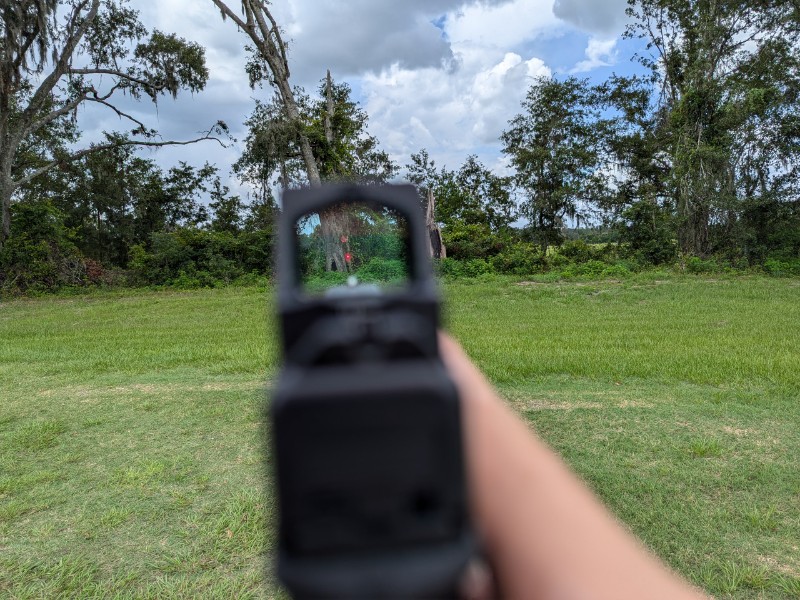
The Defender-ST greatly improved the CCW by using a better emitter. The refresh rate difference is notable, and the ST doesn’t lag like the CCW. Drive the guns between different targets reveals the lag of the CCW. The ST features a faster refresh rate, and it’s not lagging or failing at lower brightness levels.
When I shoot the ST, it looks like a red streak that allows me to track my shots. When I shoot the Defender, it’s a series of dots rather than a bright red streak. There’s a night and day difference between the two optics. I can’t tell why they didn’t take this route in the first place.
Both optics will retain zero and can take a decent beating. That front texturing encourages you to use the optic as a charging handle, and you can drive the optic against a wall, table, or boot, and the optic can take it. Thick walls and a bulky design support the glass. The optics both function, but the ST has some advantages.
Price
Smaller optics should be cheaper, and the CCW has an MSRP of 349.99, while the ST has an MSRP of 469.99. MSPRs are one thing, and street price is another. You can purchase the ST for 329.99 and the CCW for 249.99. Both fall into the budget realm for red dots. I think the Defender-ST stands apart in the budget realm. It’s a solid budget buy. The Defender CCW faces more intense competition from optics like the Holosun 407K.
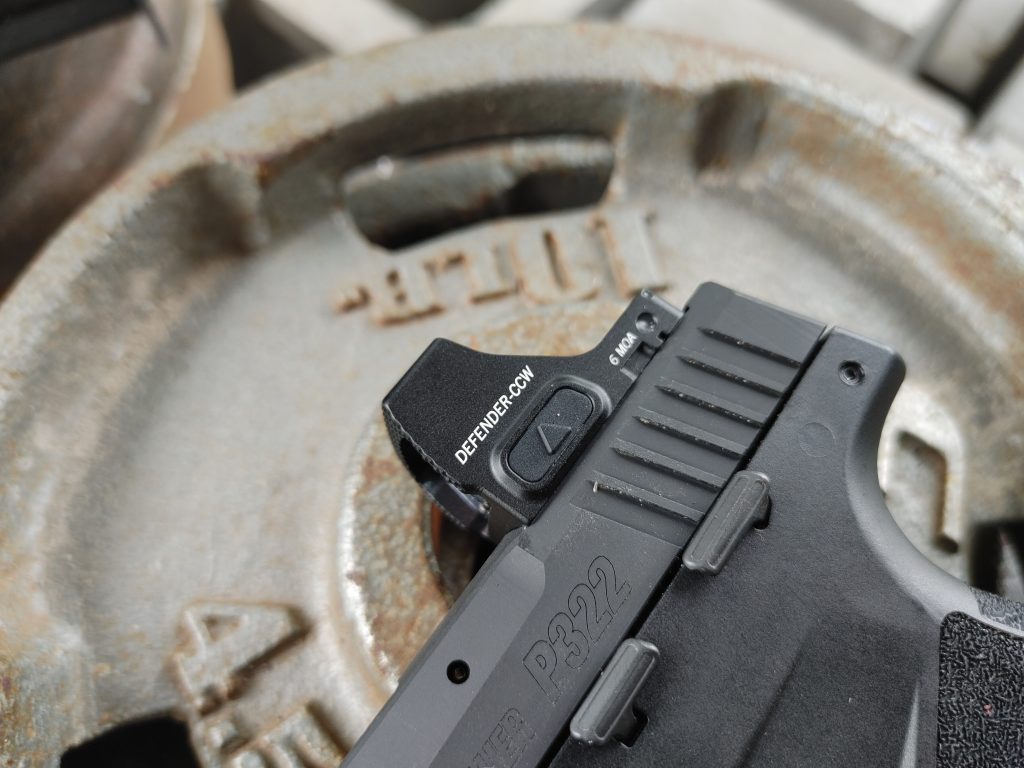
The Obvious
I think it’s obvious that my choice of optic is the Defender-ST. If I had to pick one of the two, it’d be the ST. The problem here is that these optics aren’t directly competing with one another. One is for a micro compact-style pistol, and the other is for a compact to full-sized gun.
That said, I would pick the Defender-ST as a budget optic for a handgun and endorse it wholeheartedly. What are your thoughts on the Vortex Defender series? Let us know below!
The post The Vortex Defender Series: ST vs CCW Comparison appeared first on The Mag Life.
Read the full article here

